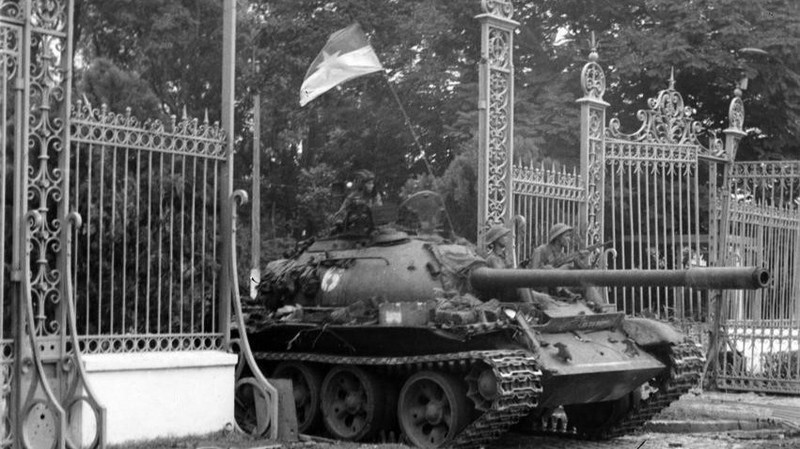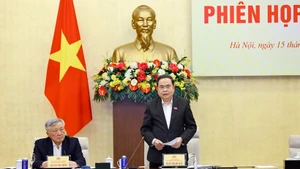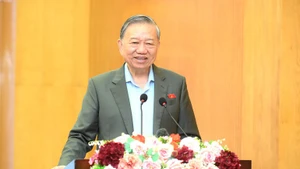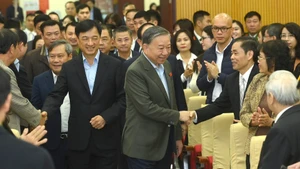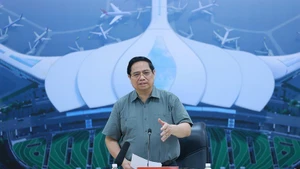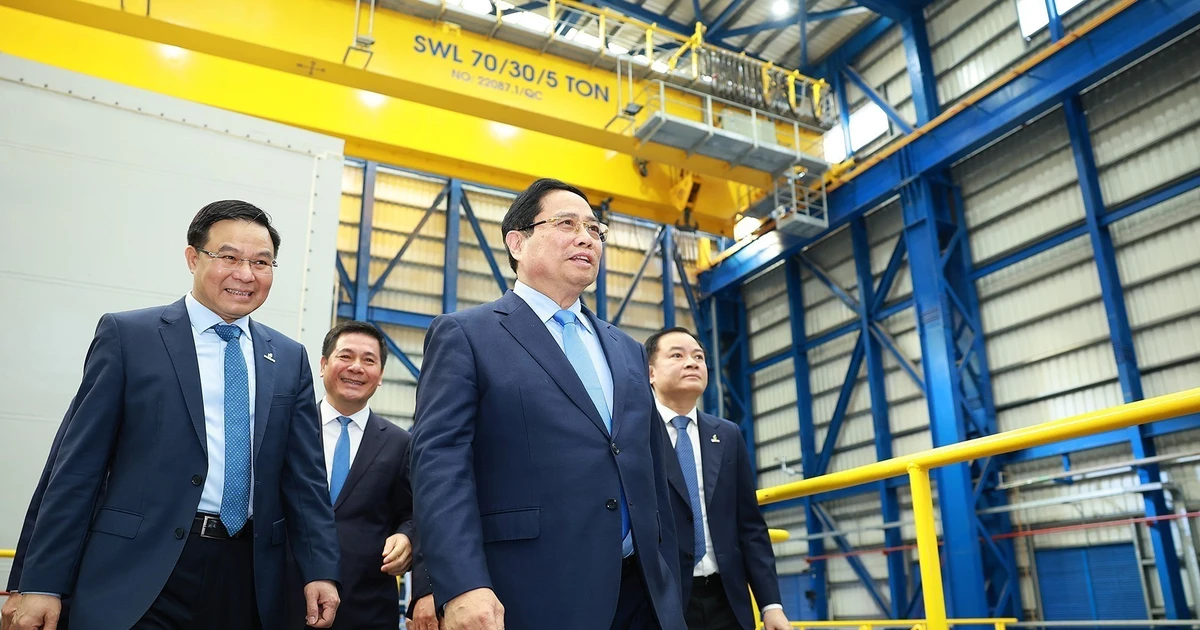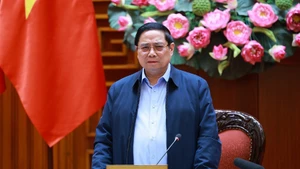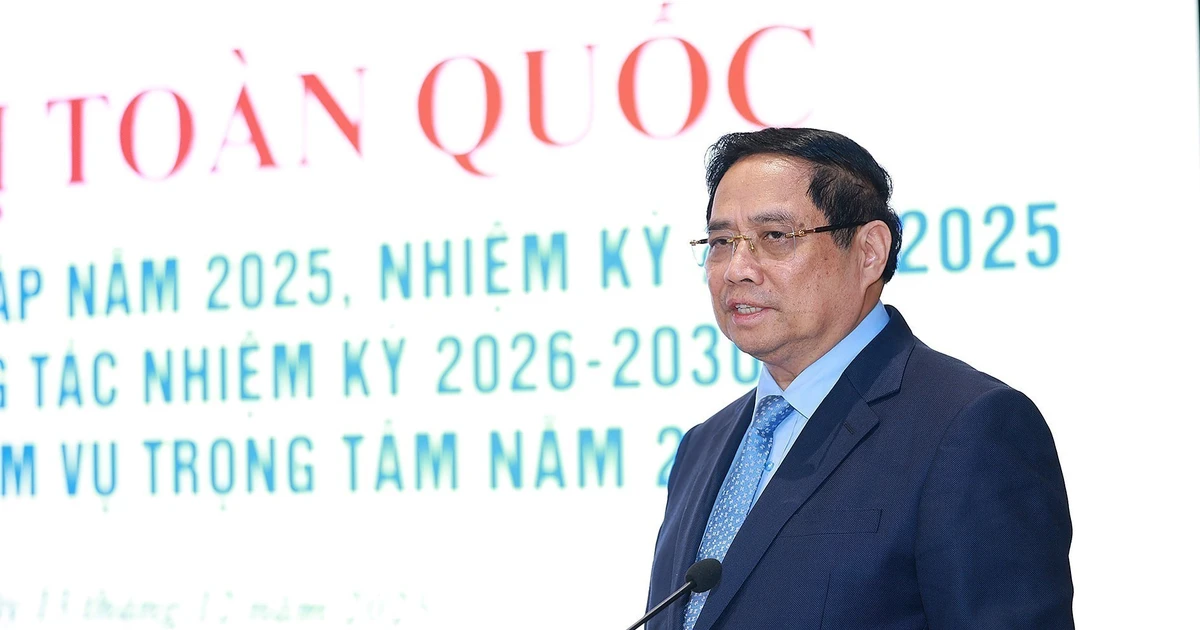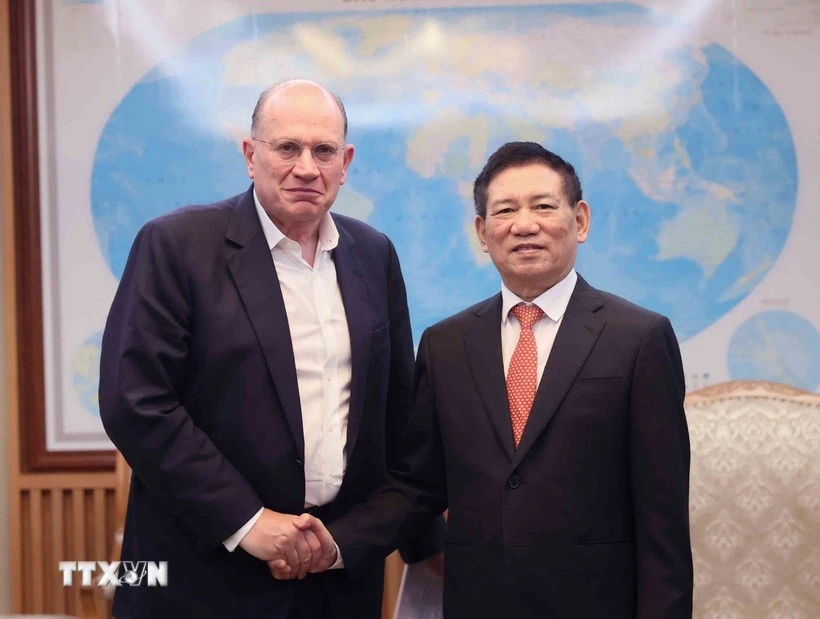On the morning of April 30, US Ambassador Martin fled Saigon. At 9:30 AM, President Duong Van Minh broadcast a message on Saigon Radio, calling on the Liberation Army to cease its advance to “discuss the transfer of power in an orderly manner.”
From 5 AM, on all fronts, Vietnamese forces, led by elite spearhead units, stormed into the inner city of Saigon.
On the northwest axis, at 7:15 AM, artillery and mortar units from Army Corps 3 and Division 10 unleashed a barrage on Tan Son Nhat Airport and the headquarters of the Saigon army’s General Staff. From their launch positions, the assault units swiftly moved in to capture designated targets. At 6:30 AM, Regiment 24 and a battalion of the Armoured Brigade 273, guided by special task forces, launched an attack on the Bay Hien intersection.
By 9:45 AM, Regiment 24, supported by tanks, launched a two-pronged assault on Tan Son Nhat. In the first prong, Company 5 served as the spearhead, with Battalion 5 breaking through Gate No.5, overrunning the communications centre and the headquarters of Air Force Division 5. The enemy mounted fierce resistance. Meanwhile, Battalions 4 and 6 of Regiment 24 advanced through Gate No. 4, take control of the Airborne Command, Air Force Command, and surrounding military targets.
Company 9 of Battalion 6 quickly advanced to David Camp, which housed the headquarters of the two military delegations participating in the Four-Party Joint Military Commission under the Paris Agreement. The reunion between Regiment 24 fighters and their comrades stationed there was deeply emotional.
Battalion 6 then continued its assault, seizing the headquarters of the Republic of Vietnam’s air force. By 11:30 AM, Regiment 24 had taken full control of Tan Son Nhat Airport.
Upon receiving orders to attack the headquarters of the Republic of Vietnam’s General Staff, at 9:30 AM, Regiment 28 advanced to Cha Ca Tomb (dedicated to Bishop Ba Da Loc) and encountered Regiment 24 engaging the enemy at Gate No.5. They immediately manoeuvred to the right flank. Battalion 3, accompanied by Tank Battalion 2, engineering, reconnaissance, and anti-aircraft units, launched a breakthrough assault on the main gate. The enemy put up fierce resistance.
Regiment 28 divided into two directions: one force attacked the main gate, while the other circled around to the southeast. Led by tanks, Regiment 28 forces broke through the main gate and advanced directly into the central building of the General Staff headquarters, securing the objective by 11:30 AM on April 30.
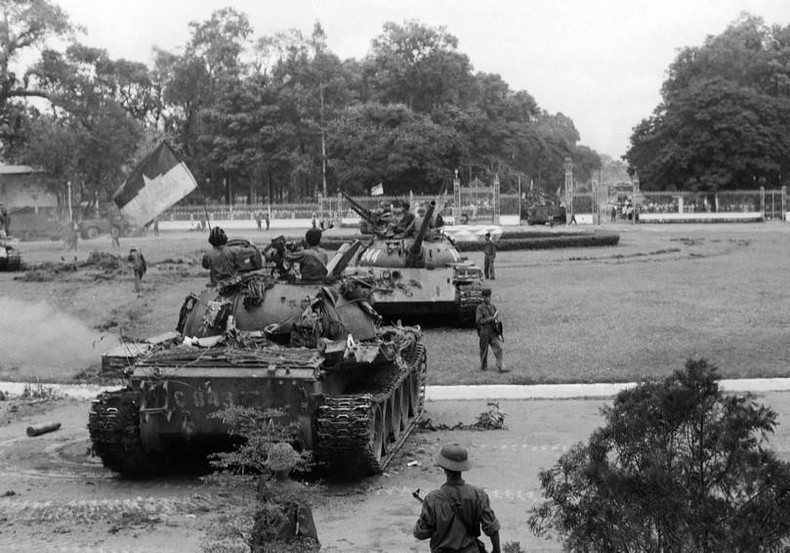 |
| A liberation army tank captured the Presidential Palace of the Republic of Vietnam at noon on April 30, 1975. (Photo: Quang Thanh/VNA) |
At the same time, soldiers from Division 320B of Army Corps 1 attacked the enemy’s General Staff headquarters from another direction, capturing the multi-story buildings, artillery positions, and helicopter field near Gate No.2, including communication centres, intelligence offices, and the logistics command. They pushed into the central area and coordinated with Regiment 28 to secure and defend the headquarters’ main building.
Regiment 64 of Division 320A, under the command of the corps, advanced toward the Independence Palace to rendezvous with allied units, but did not arrive until 1:00 PM. They then joined forces in the assault, taking control of District 3 and Phu Nhuan District. Divisions 316 and 320 continued to pursue and eliminate enemy remnants, working in coordination with local forces in Tay Ninh, Cu Chi, and Hoc Mon to liberate these localities.
On the northern front, under the direction of Corps I, Regiment 165 (Division 312), supported by 10 tanks and two companies of local militia, launched an assault on the Phu Loi base. Regiment 209 seized control of An Loi, Cau Tay, My Thach, and Xom Xoai, while Regiment 141 advanced past Trang Bang and attacked enemy positions in Lai Khe. These forces then pushed forward to Thu Dau Mot, breaking up and annihilating Division 5 and the remaining enemy troops, and worked with local forces to liberate the entire province of Binh Duong.
In the early morning of April 30, Division 312 ordered Regiment 209, Regiment 141, and reinforced technical units, supported by a local militia battalion, to encircle and block the enemy’s Infantry Division 5 (minus one regiment) at the Lai Khe stronghold cluster. By late morning, the enemy forces at the position surrendered and raised white flags.
Advancing along National Highway 13, the deep penetration force of Division 320B crushed the defensive system in the military district of Lai Thieu, breaking through the final “steel gate” on the northern approach to downtown Saigon. In the early morning on April 30, Regiment 27 (Division 320B), reinforced by a company of three tanks from Brigade 202, launched an assault on Binh Phuoc Bridge and the commands of various enemy military branches. At Vinh Binh Bridge, fierce fighting erupted over control of the crossing. By 8:30 AM, Regiment 27 had secured the bridge. Guided by local residents, the unit then captured Binh Phuoc Bridge and the enemy’s branch headquarters in Go Vap.
The main spearhead into the city was led by Regiment 48 (under Division 320B), which broke through enemy positions at Binh Trieu Bridge and advanced deep along the Bach Dang and Chi Lang streets to strike the General Staff Headquarters of the Saigon army. While Division 10 (under Corps 3) seized Gate No.1 of the headquarters, Regiment 48 captured Gate No.2 along with the computing centre, central communications facility, and operations command centre.
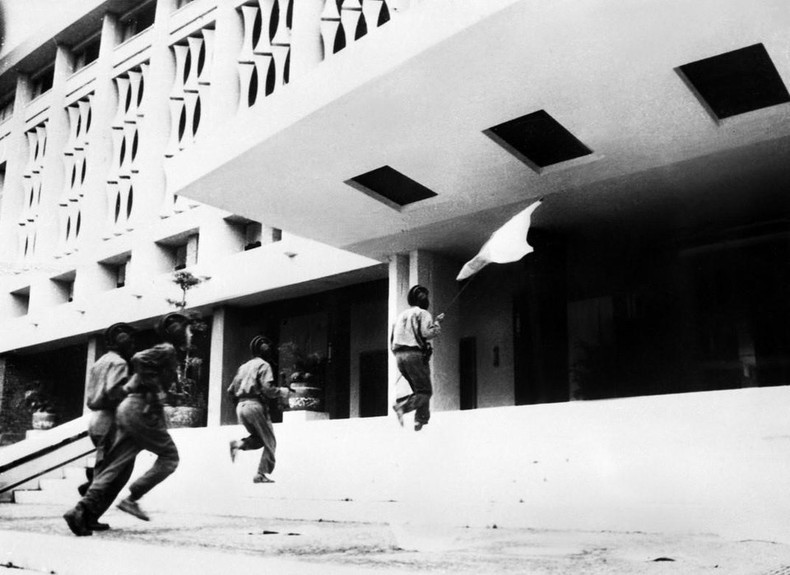 |
| Lieutenant Bui Quang Than, commander of Tank Company 4 (holding the flag, front), and three soldiers of the Armoured Brigade 203 under Division 304 of Corps 2, advanced to plant the flag on the roof of the Presidential Palace of the Republic of Vietnam regime at noon on April 30, 1975. (Photo: Vu Tao/VNA) |
On the western and southwestern fronts, Force 232 launched an offensive and took control of the Hau Nghia area and both banks of the Vam Co River. After crossing the river, Division 9 advanced in two directions. The first column, led by Regiment 1, eliminated a paratrooper battalion at Ba Queo Junction, seized the Vinh Loc subdistrict post, then attacked and routed enemy forces at Bay Hien Intersection before advancing along Le Van Duyet Street to capture and secure the headquarters of the Saigon Capital Special Zone Command at 10:30 AM. A portion of this force then proceeded toward the Independence Palace.
The second column, Regiment 3, destroyed the headquarters of the Ranger Group 8 and the Ranger Battalion 88 along the Dai Han defence belt, defeated the Regional Forces Battalion 327 in the south of Vinh Loc, attacked the RF Battalion 317 outpost, seized the Ba Hom subdistrict post, and captured the Phu Tho horse racing track. A portion of the unit then advanced to join forces at the Independence Palace.
At 5:30 AM on April 30, Regiment 24, together with special forces, launched an assault on enemy positions at the Dinh Hung Dong junction, subsequently capturing Nhi Thien Duong Bridge and Chu Y Bridge. By 10:30 AM, the regiment had seized the National Police Headquarters and sent a contingent to link up at the Independence Palace. Meanwhile, special forces units rapidly mobilised to capture Tan Binh District at 8:00 AM, Binh Chanh District at 10:00 AM, and the Rung Sac (Sac Forest) Special Zone at noon.
Between 5:30 and 8:00 AM, Regiment 88 attacked and destroyed the Ba Phuoc subdistrict post, then advanced to capture Ong Thin Post, An Phu Junction, and the Nha Be area. Regiment 16 seized the Western Bus Station area, An Lac, and Binh Dien, with part of the force pushing further into downtown Saigon.
Between 5:00 AM and 12:00 AM on April 30, Division 5 launched a major offensive, eliminating and forcing the surrender of the entire Division 22 and several Ranger groups. Subsequently, the division, in coordination with local forces, captured Tan An Town and the Thu Thua District post.
On the eastern front, from 7:00 to 9:00 AM on April 30, Division 6 (under Corps 4) coordinated with Regiment 3 (Division 341) to capture the headquarters of the enemy’s Corps 3. By 11:00 AM, they had seized the command centre of the Air Division 3 and Bien Hoa Air Base. At 9:00 AM, Division 341 captured Hoc Ba Thuc and advanced toward Thu Duc at 1:00 PM. At 10:30 AM, Regiment 209 took over the headquarters of Division 18 and the Ranger area before advancing into the inner city of Saigon. At 11:00 AM, Battalion 7 of Regiment 3, accompanied by six tanks, crossed Ghenh Bridge and continued the assault while marching, eventually reaching Saigon by 4:30 PM.
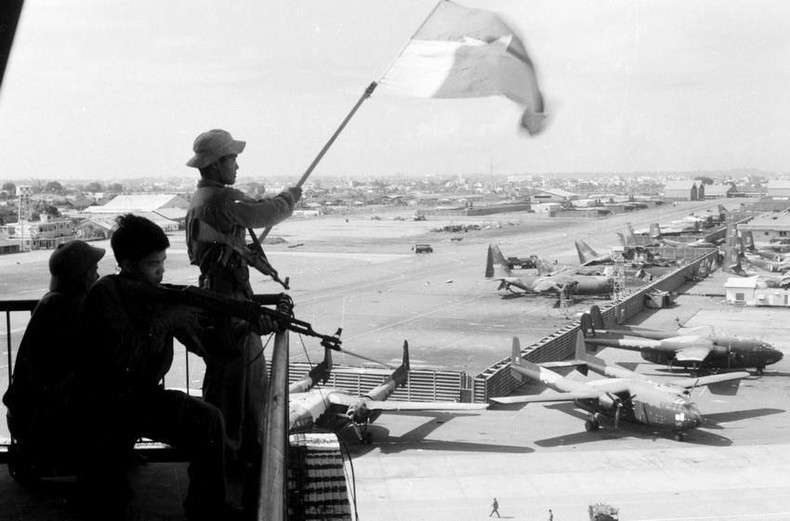 |
| The flag of the liberation army flew at Tan Son Nhat airport on April 30, 1975. (Photo: Quang Thanh/VNA) |
At 9:00 AM on April 30, Division 7 began its advance into Saigon along the highway, capturing designated targets including the Marine Corps Headquarters, the Naval Base, the Ministry of Defence of the Saigon regime, and Bach Dang Port. Following Division 7’s advance, Brigade 52 launched attacks and secured assigned objectives in District 10.
On the southeastern front, in the early hours of April 30, after securing Xa Lo Bridge over the Dong Nai River, the Headquarters of Corps 2 immediately ordered its mechanised assault units to swiftly advance toward Thu Duc and Saigon.
Division 304 (Corps 2), after capturing Long Binh and securing the Saigon Highway, launched an assault on Tan Cang. By 1:30 PM, Division 325 had crossed the river and seized District 9 and Thu Thiem. Division 3 (under Military Zone 5) secured Vung Tau and, with the help of local residents providing boats, crossed the river and captured Can Gio.
At 5:00 AM on April 30, the spearhead formation, comprising Tank Brigade 203 and Regiment 66, guided by Commando Regiment 116, crossed Bien Hoa Bridge, bypassed enemy blocking positions at the Thu Duc crossroads, and reached Rach Chiec Bridge at 9:00 AM. That same morning, the assault column crossed Saigon Bridge, eliminated enemy resistance at Hang Xanh and Thi Nghe Bridge, and advanced toward the Independence Palace.
At 10:30 AM, with the guidance of city commandos, Company 4 of Tank Brigade 203, led by Company Commander Bui Quang Than, spearheaded the assault, crashing through and entering the Independence Palace. The lead units of Infantry Regiment 66 (under Corps 2) and a commando detachment then forced President Duong Van Minh and the entire cabinet of the Saigon regime to surrender. By 11:30 AM, the flag of liberation army was flying over the rooftop of the Independence Palace, signalling the complete victory of the Ho Chi Minh Campaign.
After more than three days and nights of swift and heroic combat, the liberation army successfully captured five major targets, and on April 30, we took full control of all military, political, and economic objectives in downtown Saigon.
On the same day, April 30, 1975, liberation army forces in the Mekong Delta continued to coordinate with the local population in simultaneous attacks and uprisings to seize power. Especially after receiving the news that Saigon had been liberated, the enemy's morale collapsed. As a result, nearly all districts and provinces in the Mekong Delta carried out rapid local liberation. On April 30, the people and armed forces in the provinces of Can Tho, Go Cong, My Tho, Vinh Long, Tra Vinh, Soc Trang, Bac Lieu, Rach Gia, Sa Dec, and Long An joined forces in attacks and uprisings, liberating their regions.
In Can Tho, Military Region 9 used Division 4 to successively capture Tra Noc Airport and the headquarters of the 4th Air Force Division of the enemy and then advance into the city centre. They took control of key locations such as the headquarters of Military Region 4 of the enemy, the airport, the harbour, the warehouses, and the units under the enemy's Navy Command. At the same time, local armed forces and special forces units coordinated with the revolutionary masses in uprisings, taking control of important positions within the city. By the evening of April 30, 1975, Can Tho was liberated.
In Tra Vinh, on the morning of April 30, armed forces from several directions entered the town, coordinating with local forces and the people to disarm and force the surrender of Security Battalions 404 and 407, while also capturing notorious criminals. By noon, Tra Vinh was completely liberated.
In Vinh Long, on the morning of April 30, the armed forces of the region and province launched a coordinated attack to capture the town as planned. The enemy stubbornly attempted to use artillery to obstruct and fought fiercely in their strongholds on the outskirts of the town. By 3:00 PM on April 30, the armed forces, in coordination with the people's political forces, captured the airport, destroyed the civil defence posts, and forced the surrender of several military outposts. By the afternoon of April 30, Vinh Long was liberated.
 |
| President of the Republic of Vietnam Duong Van Minh and his cabinet appeared at the Saigon Radio Station to announce an unconditional surrender, marking the end of the Vietnam war at noon on April 30, 1975. (File Photo: VNA) |
In Soc Trang, during the night of April 29 to the morning of April 30, our main forces and local units simultaneously launched an attack on Soc Trang Town. The armed forces, in conjunction with the uprising of the local population, captured key objectives within the town, such as An Hoa Bridge, Nam Ong Pagoda, the police station, the provincial governor's residence, the Hoang Dieu area, Ly Thuong Kiet Camp, and the airport. The enemy fought fiercely. By 2:00 PM on April 30, the town and most areas in Soc Trang had been completely liberated.
In Bac Lieu, thanks to effective prior propaganda and psychological operations targeting enemy troops, on the morning of April 30, Vietnamese troops’ cadres mounted flags of the Liberation Front on vehicles and drove straight into the provincial governor’s residence. On the streets, crowds of people gathered in front of the administrative offices, forcing the provincial colonel-governor to officially hand over power to the revolutionary forces at 11:30 AM.
In Ha Tien, at 5:00 PM on April 30, armed forces in coordination with the masses launched an offensive and uprising that completely liberated the towns of Ha Tien and Kien Luong.
Also on April 30, the Politburo sent a message of “warmly praising the troops and people of Saigon – Gia Dinh, praising all cadres and soldiers, Party members and Youth Union members from regular army units, local forces, elite troops, and militia who fought with tremendous bravery, achieving brilliant victories by destroying and dismantling a large portion of the enemy’s forces, forcing the Saigon puppet regime to surrender unconditionally, liberating the city of Saigon – Gia Dinh, and bringing the historic campaign bearing the name of great Uncle Ho to complete victory.”
